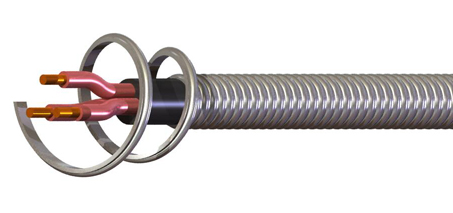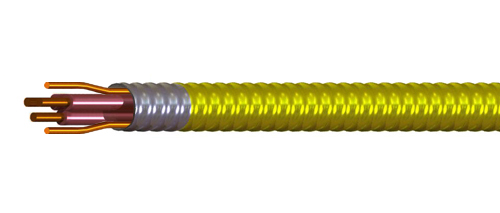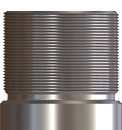Class I, Division 1, Certification
Taurus Engineering offers a selection of products that have been certified by the Canadian Standards Association for use in Class I, Division 1 hazardous locations within the United States and Canada and are eligible to bear the CSA Certification Mark shown with the adjacent indicators "C" and "US"
The CSA mark designates certification and compliance to applicable standards for safety and/or performance written or administered by the American National Standards Institute (ANSI), Underwriters Laboratories (UL), Canadian Standards Association (CSA), National Sanitation Foundation (NSF), and others.
A fully certified Class I, Division 1 ESP system is designed primarily to be explosion proof and meets National Electric Code requirements as such.
An Explosion Proof System is designed so that any discontinuity or other fault within a connector or cable that could cause an explosion in a hazardous location (in which flammable gasses are being vented near the surface) is contained within individual components of the system, providing a safe environment and insuring protection of all components.
Explosion Proofing is achieved primarily through robust connector designs and use of rugged MC-HL (Metal Clad Hazardous Location) surface cable.
Downhole ESP cable is NOT designed for surface applications. It is not rated or certified, and relies on coiled armor wrapped around the jacket for ground purposes, which can be highly volatile in surface conditions. If the coiled armor’s integrity is compromised, there can be gas decompression problems during pressure changes, and the entire cable system can become energized. ESP cable also has no environmental seal, and therefore cannot be safely buried.
|
Cable Types
|
|

|

|
|
Downhole ESP Cable with coiled armor wrapping and rubber jacket
|
Surface MC-HL cable with continuous armor, ground wires, and environmental barrier
|
MC-HL cable is designed for surface use with explosion proof systems. The cable has 1-3 ground wires for safety, so if there is a fault in the system the electrical connection will default to these wires, rather than energizing the entire cable system. MC-HL does not have a coiling wrapped armor; instead, the armor is a continuously welded hollow tube. By incorporating flame path restrictions on either side of the cable, any potential explosion is cooled down and neutralized internally without becoming explosive or hazardous. The solid armor tube is surrounded by a safety barrier, which provides an environmental seal to the cable system, allowing it to be safely buried.
A Class I, Division 1 system has longer threads between connections than a non certified system. When the connection between male and female contacts is disengaged (not touching), there must be a minimum number of threads engaged between the Feedthru and the Surface Pigtail Coupling Nut so that a flame path restriction is in place. This insures that if there is a discontinuity or other problem that leads to an electrical arc or spark, any potential explosion will be constrained within the Connector and will be allowed to cool.
|
Feedthru Thread Lengths
|
|

|

|
|
Standard
|
Certified
|
While this provides a safe non-volatile system, the excess threads on Feedthrus and Surface Pigtail Coupling Nuts can lead to possible interference with wellhead flanges and other components. In order to allow Class I, Division 1 systems to install to virtually any wellhead application, Taurus Surface Pigtails are designed with industry-leading geometrical compactness, especially in their overall height.

